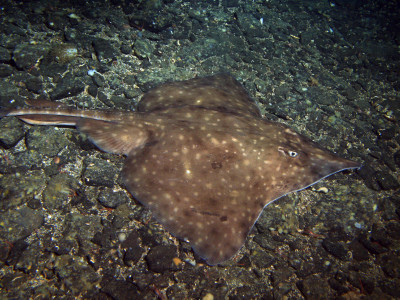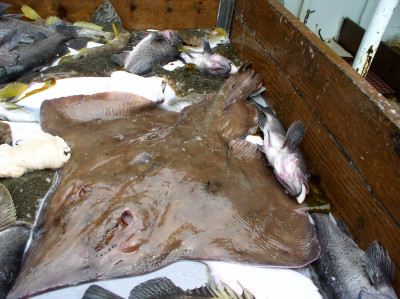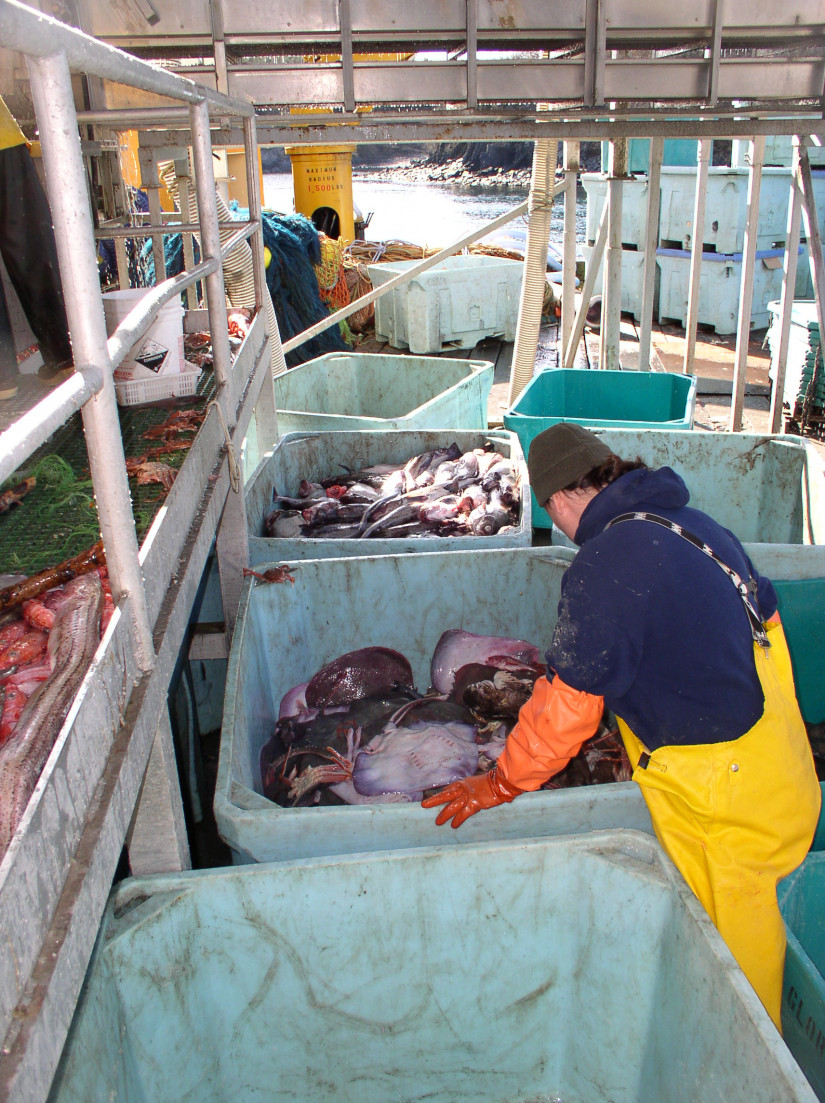For close to a century, central California trawl fisheries have logged incidental catch of skates while fishing for other groundfish. However, until very recently, fishers did not identify the individual species of skates caught, instead simply logging all of them as “skates”.
As we fast-forward to modern fisheries management practices, this poses a problem: how can we know our impact on local skate populations if we don’t know the historical impact these fisheries have had on individual species?
In order to better understand these issues, California Sea Grant funded a research project to understand the fisheries impacts and life histories of the three skate species most commonly caught off the California coast. While the two most commonly caught species were not found to be at risk, researchers believe that another species needs further investigation.

Skates, a family of rays, are flattened fish with skeletons of cartilage. Similar to other elasmobranchs (sharks and rays), they tend to be slower-growing and produce fewer offspring than many other commercially-caught fish species. This can put them at a higher risk of being overfished. While little is still known about these fish, they are believed to play an important role in the local food web, and ensuring the health and stability of their populations may be important for the health of the ecosystem.
But growth and fertility rates vary from species to species. As part of the project, the researchers investigated biological details of the skates to better understand their reproduction. “Generally, the smaller, quicker-growing skates gain in abundance,” says Joe Bizzarro, the Moss Landing Marine Laboratory research affiliate who led the project. “And the bigger, slower-growing skates that are easier to catch are more marketable, and have waned in abundance.”
Because of their tendency to lie in rest on the seafloor, skates are regularly caught in bottom trawl fisheries. Bottom trawling—a fishing method that involves dragging a large net along the seafloor—catches any animals in its path. And while they were not intentionally targeting these species, fishers were eventually able to develop an incidental catch market for the bycaught skates.
“There's not much demand for skate meat in the US, but there is in Asian markets. And one of the reasons that has become a pretty big fishery is because they're a really common and abundant bycatch in other groundfish fisheries,” says Bizzarro. “It’s not what they’re really looking for—but if they can get a good incidental catch market for them, they will fish in areas with lots of skates to augment their catch.”
As the market for skate meat has grown, there has also been growing interest in ensuring the stability of their populations. Which has been limited by the amount of data available.

“There was a historical fishery in California that dates back to the early 20th century,” says Bizzarro. “In the ‘30s, ‘40s, and ‘50s it started ramping up, they were catching mostly California skates and big skates, which we know from anecdotal information, but nobody was recording the landings by species.”
This has made it difficult to estimate the historical size of these skate populations, and thus the current state of the species. So Bizzarro and his team worked to combine the life histories of each individual species with the more recent fisheries logs to generate hindcast models of big, longnose, and California skates—the three species most prevalent in these fisheries.
What they found was that neither big nor longnose skate populations appear to be at risk of overfishing, but that California skates could be and would need a formal assessment.
“2003 is the first year that marine fisheries started collecting really good specific data on skates. That's not that long,” says Bizzarro. “So I'd say in terms of the overall outlook on skates: it doesn't look like the populations off California are currently in bad shape, of the few that are assessed. But there's one that isn't assessed that looks like it might be.”

Among a number of publications that resulted from this research were stock assessments for both big and longnose skates. However, the species which appears to have been most prevalent in historical catches, and is notably absent from recent catches, is the California skate. And while this funded research did not cover an assessment of these fishes, Bizzarro sees this as a next step in California skate management.
“What we found was that the California skate was caught in high numbers early and then just kind of disappeared from the catch. That wasn't one of the species that were assessed,” says Bizzarro. “But I think that skate species might be the one that requires the most attention because it’s got a very narrow distribution.”
While management of these populations is important for local ecosystems, it can be hard to secure funding for what is a relatively small fishery. Prior to this funded project, Bizzarro had been working on this type of research in his free time.
“It's hard to get continued funding or a position to work on elasmobranchs,” says Bizzarro. “The Sea Grant [funding] is great, because that was some really needed work and we wouldn't have been able to get a lot of it done otherwise.”
But this research highlights the need for continued study of these little-known species. With such limited data, more research will be needed to ensure the management and conservation of California’s skates.
“In my spare time over the next five years, I'm going to figure out what the California skate population is doing,” says Bizzarro. “Whether they fund it or not, just because it's interesting to me, and it needs to be done.”
About California Sea Grant
NOAA’s California Sea Grant College Program funds marine research, education and outreach throughout California. Headquartered at Scripps Institution of Oceanography at the University of California San Diego, California Sea Grant is one of 34 Sea Grant programs in the National Oceanic and Atmospheric Administration (NOAA), U.S. Department of Commerce.